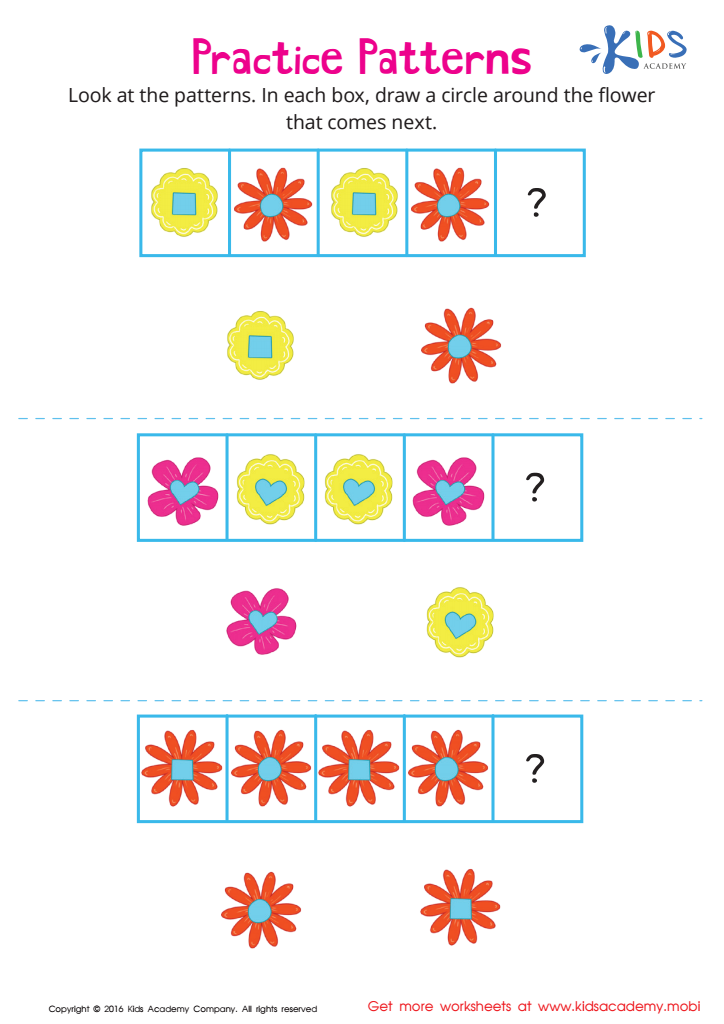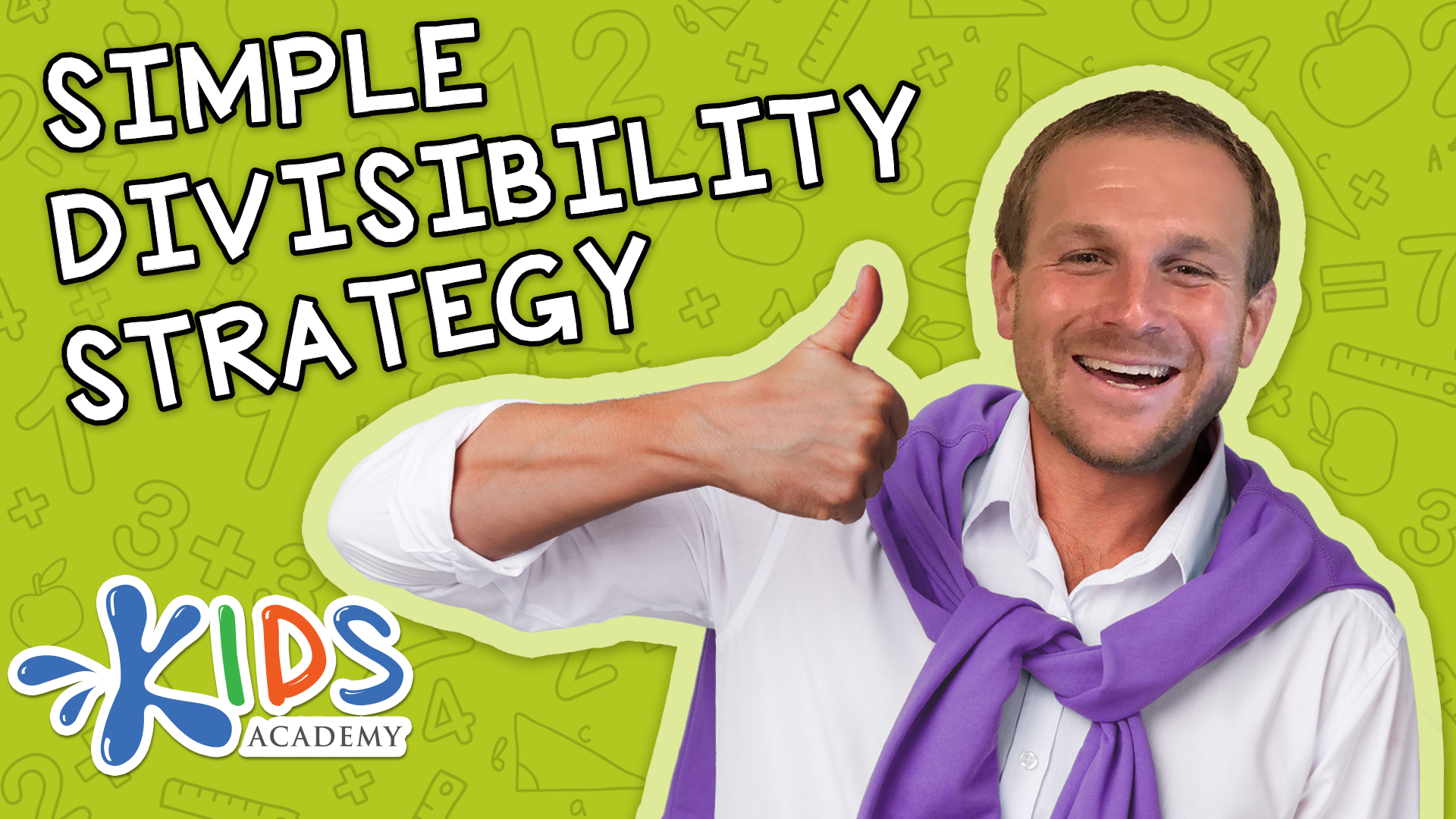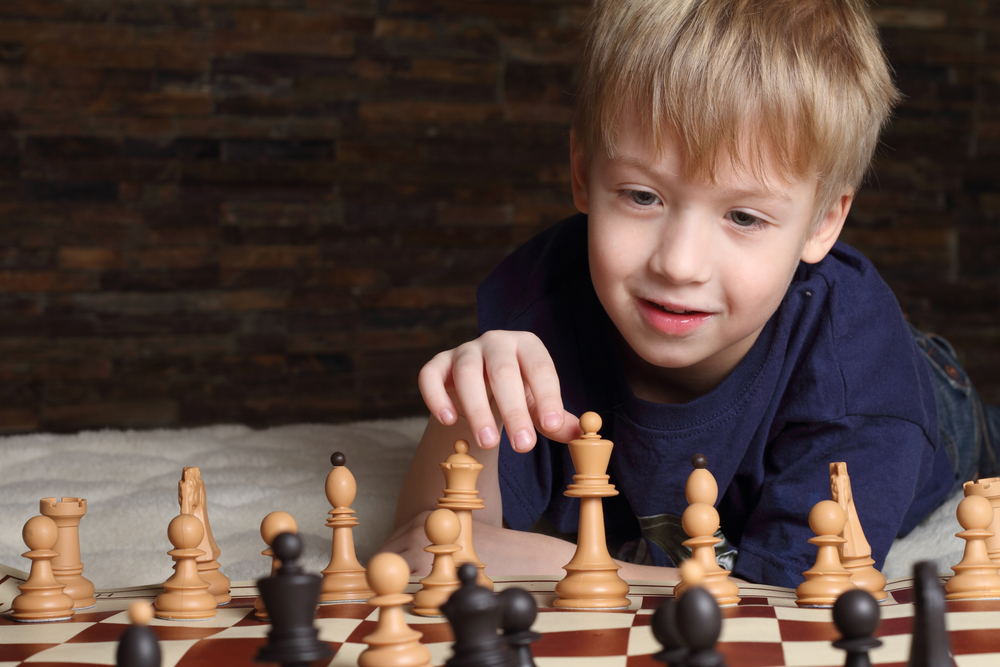Patterns Worksheets for Ages 5-7
6 filtered results
-
From - To
Introduce young learners to the exciting world of patterns with our engaging "Patterns Worksheets for Ages 5-7." Designed for early childhood education, these worksheets help children recognize, create, and extend a variety of patterns using fun and playful visuals. Through these activities, kids will develop essential early math skills, such as sequencing, critical thinking, and problem-solving. Each worksheet provides clear instructions and delightful images to keep young minds intrigued and motivated. Perfect for classroom use or at-home practice, our patterns worksheets make learning a joyful experience. Ignite the love of learning and enhance your child’s academic journey with these creative resources!
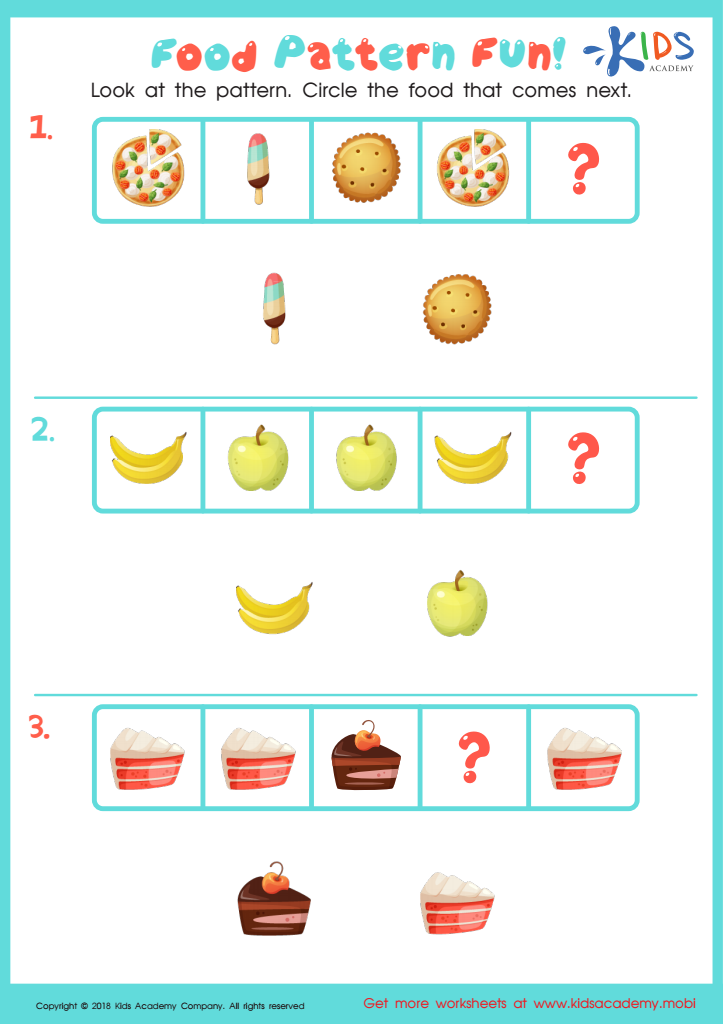

Food Pattern Fun Worksheet
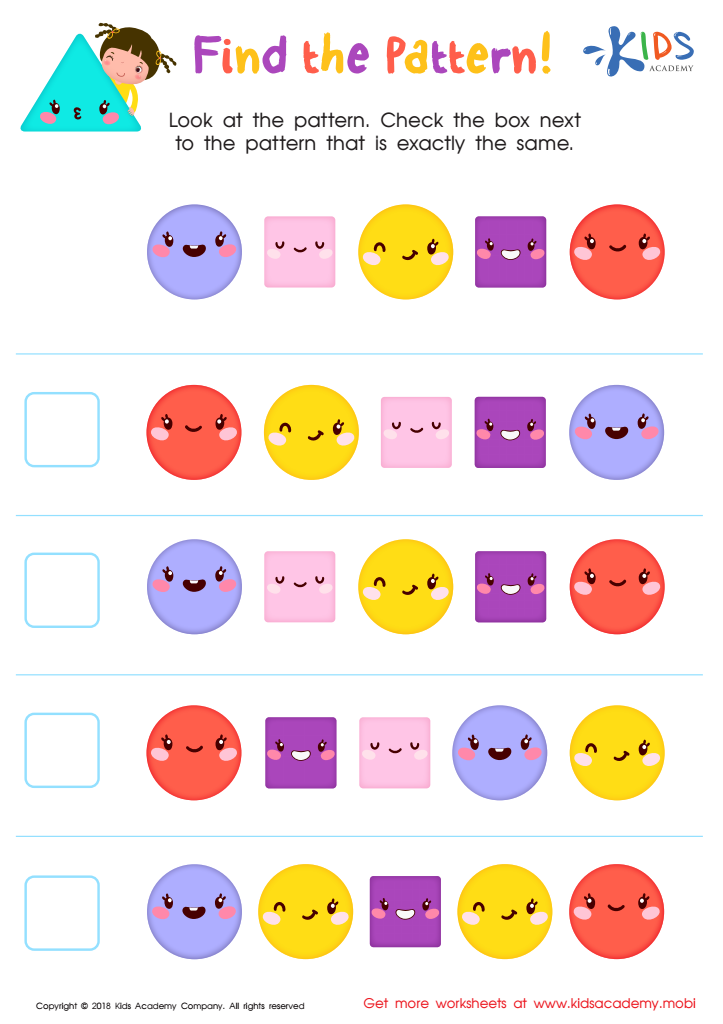

Find the Pattern Worksheet
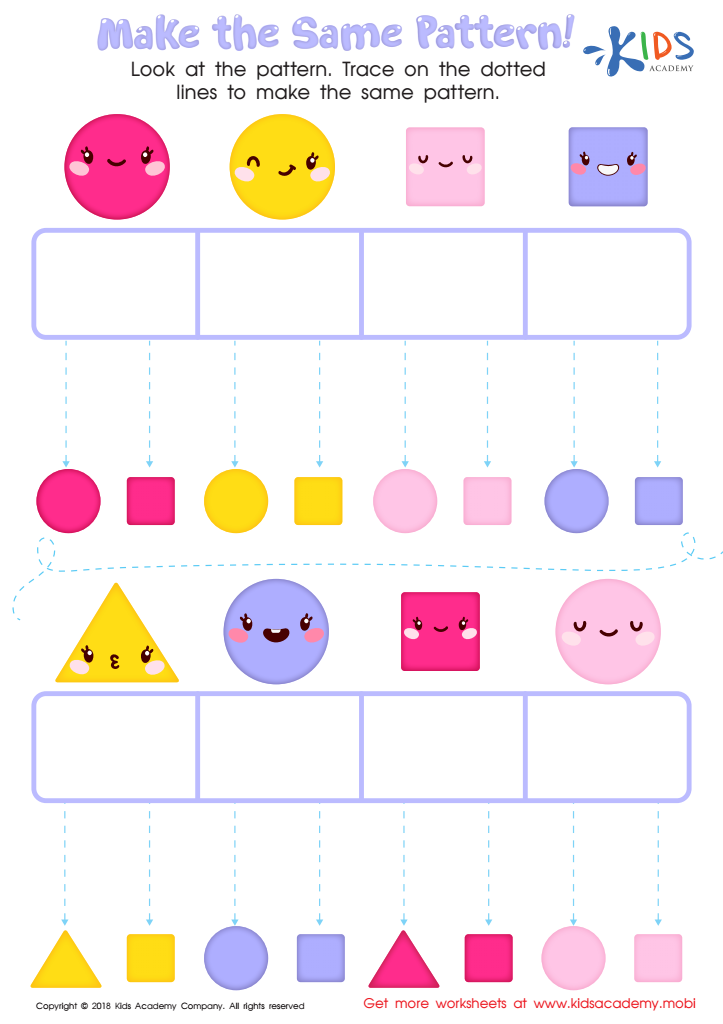

Make the Same Pattern Worksheet
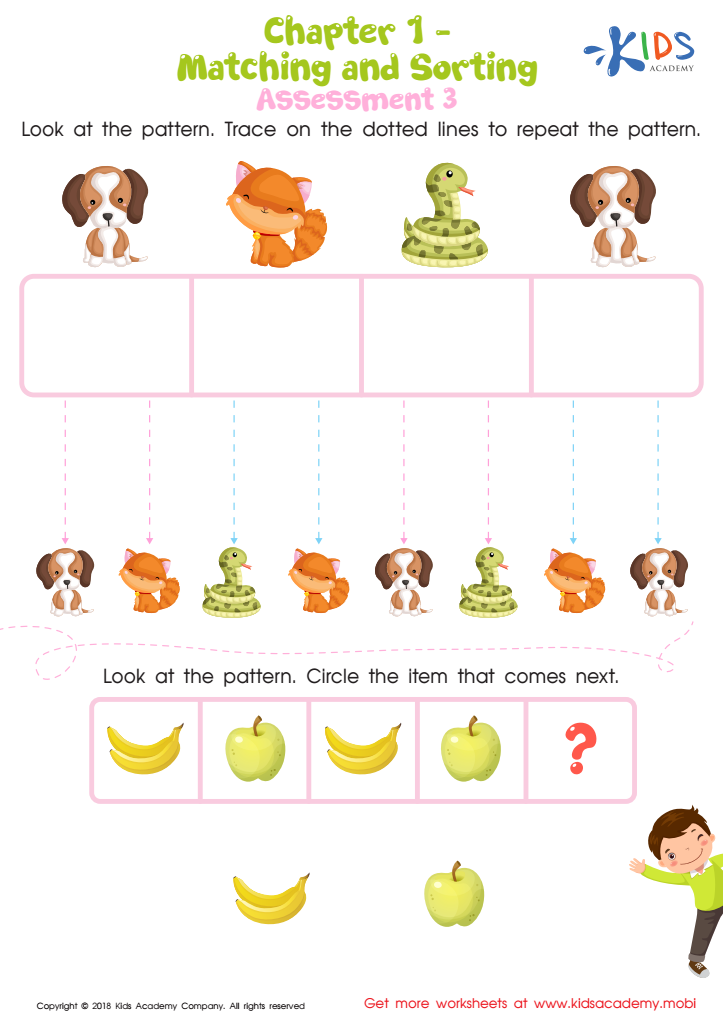

Matching and Sorting for Preschool: Assessment 3 Worksheet
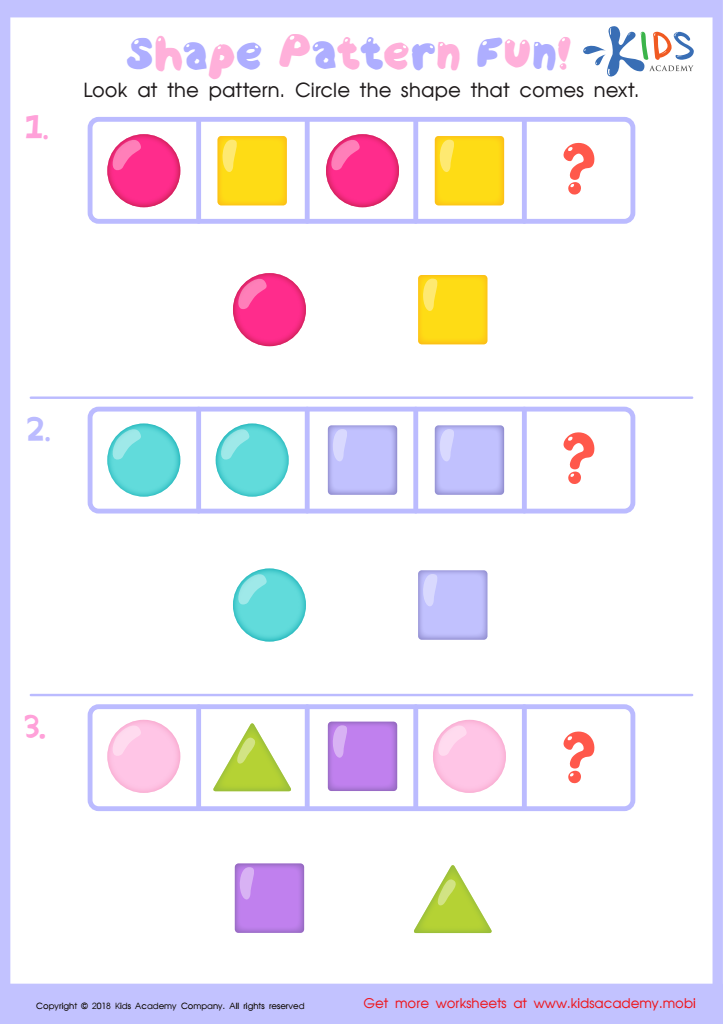

Shape Pattern Fun Worksheet
Patterns are an essential building block in early childhood education, and understanding them forms the foundation for many academic skills and real-life problem-solving abilities. For children aged 5-7, recognizing and creating patterns helps develop critical cognitive skills, such as logical thinking, reasoning, and memory. By engaging with patterns, children learn to predict what comes next, which enhances their sequential thinking abilities, a skill crucial for grasping early math concepts like addition, subtraction, and multiplication.
Furthermore, patterns are not just limited to mathematics; they also play a vital role in literacy. For instance, understanding patterns in word structures, syllables, and sentence patterns supports early reading and writing development. Recognizing repetition in stories and rhymes can aid in developing fluent reading skills.
Another important aspect is the impact on social and emotional development. Working with patterns can build confidence as children successfully complete progressively complex patterns, fostering perseverance and a growth mindset. Additionally, activities that involve pattern recognition often involve collaboration, thereby enhancing social skills as kids work together to solve problems.
Incorporating patterns in early education helps create a structured learning environment where children feel more secure and ready to explore new concepts, making it a fundamental element in the developmental journey of young learners.
 Assign to My Students
Assign to My Students
